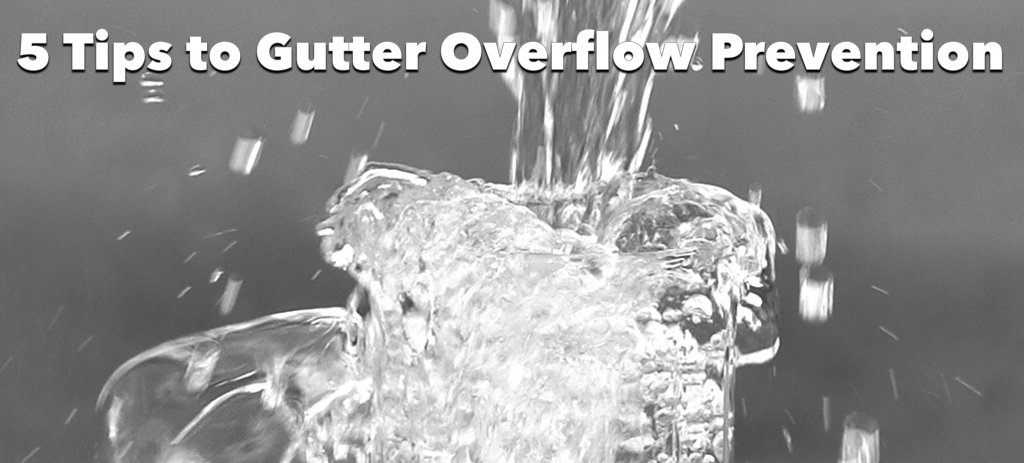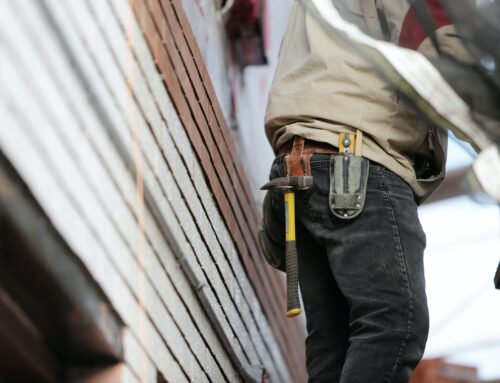
One of the biggest issues for the gutters on your home here in the Lower Mainland comes from residing in the wettest climate in the country. The average rainfall in Greater Vancouver proves to be a challenge for homeowners in many ways and it all begins above your heads, on the roof’s edges. Gutter overflow occurs when something prevents the water runoff entering your gutters from reaching and/or expelling from its downspouts. Water builds up and the gutters overflow. The damage that can occur to your property includes (but is not exclusive to) damage to your home’s eaves and exterior walls, paint discoloration, erosion of the landscape (flowers, gardens, grass) surrounding the side of your home, and even flooded basements (when there are cracks at the base of the home). If overflow occurs during the winter months, freezing temperatures at night can cause the moisture on the concrete pathways near your home to become dangerously slippery. The implications of overflowing gutters can be severe and quite numerous. Now that we’ve identified the necessity of gutter overflow prevention, it is time to look at steps that can be taken to make it so.
5 Steps to Preventing Gutter Overflow from Damaging Your Gutters and Home Exterior/Interior
1. Quarterly Cleaning of Gutters for Wetter Climates
The most obvious step to overflow prevention that needs to be restated for your benefit is to clean the gutters (and respective downspouts) surrounding the roof of your home in a scheduled manner. Some experts may tell you that a semi-annual cleaning will suffice, and in some climates this is perfectly acceptable. However, we live in the Pacific Northwest which means lots of rain and wind (which can carry gutter-jamming culprits such as pine needles, leaves, and other forms of airborne debris). Because of this, we recommend that homeowners who live near tall trees thoroughly inspect and clean their gutters on a quarterly basis, to err on the side of caution. Clean and clear gutters work wonders in preventing overflow.
2. Check the Position of Your Gutters and Adjust Accordingly
The position (or pitch) of your gutters can be the primary cause of overflow. If your gutters are clean, yet still collect water, then this is likely the issue. Make sure that the pitch slopes towards the downspouts of your gutters. Larger homes with expansive roofs will need to pitch especially long gutters (in approximate excess of 40 feet) from the mid-point so that either end of the middle slightly slopes towards the downspouts found at each side. Another alternative for long gutters is to pitch inwards towards the middle, towards a singular downspout (this will depend on whether or not the landscape below can handle the runoff). Just don’t get too carried away with the sloping, as if done in too steep of a position you’ll set yourself up for excessive spillage and splashing which can cause damage to your home’s exterior as well. A general rule here is that gutters should be pitched at 1/16 of an inch or greater per foot for proper water drainage.
3. Install Gutters on All Sides of the Home (If You Haven’t Already)
Another obvious point that may be a burden on the water intake capabilities of your gutters comes from coverage. If you don’t have gutters lining the eaves of every side of your home then you’re far more susceptible to overflow. Simply put, have gutters installed on all edges of your home, if you don’t have them so already.
4. Install Gutter Guards (for Clog and Splash Prevention)
There are two general types of guards that can help keep your gutters safe from overflow concerns. First, you have traditional gutter guards. These are as they sound, preventing debris from entering your gutters which in turn prevents build-up, clogging, and subsequent overflow. Your local hardware store will evidence a variety that suits your exterior home needs best. There are guards with varying mesh filters (best choices being dictated by the types of leaves surrounding your home’s roof) and guards with solid no-filter covers, allowing water to flow around the nose of the guard and through a slotted channel, as opposed to filtering through the mesh. The second general type of guards used to complement overflow prevention are splash guards. Splash guards are used to block the overshooting of rain water on the roof, and overflow along gutters corners, essentially adding an extra semi-vertical layer of protection. Basic aluminum splash guards are adjustable and tend to fit in any corner or angle. There are more advanced splash guards made from rubber modified acrylic which can handle any climate, but such extremes are rarely needed here in the Lower Mainland.
5. Install Bigger Gutters
One of the most effective solutions is to install larger gutters, with a wider girth and deeper trench. An extra inch can go a mile when it comes to preventing overflow and replacing a 5 inch gutter (standard) with a 6 inch alternative won’t have much of a visual impact on the exterior of your home at all. Anything above 7 inches is more appropriate for commercial buildings.
Contact AquaSeal if you need assistance with any of the above (where applicable) or for any other gutter repair/cleaning services that you may need for your Lower Mainland home or property.






Leave A Comment